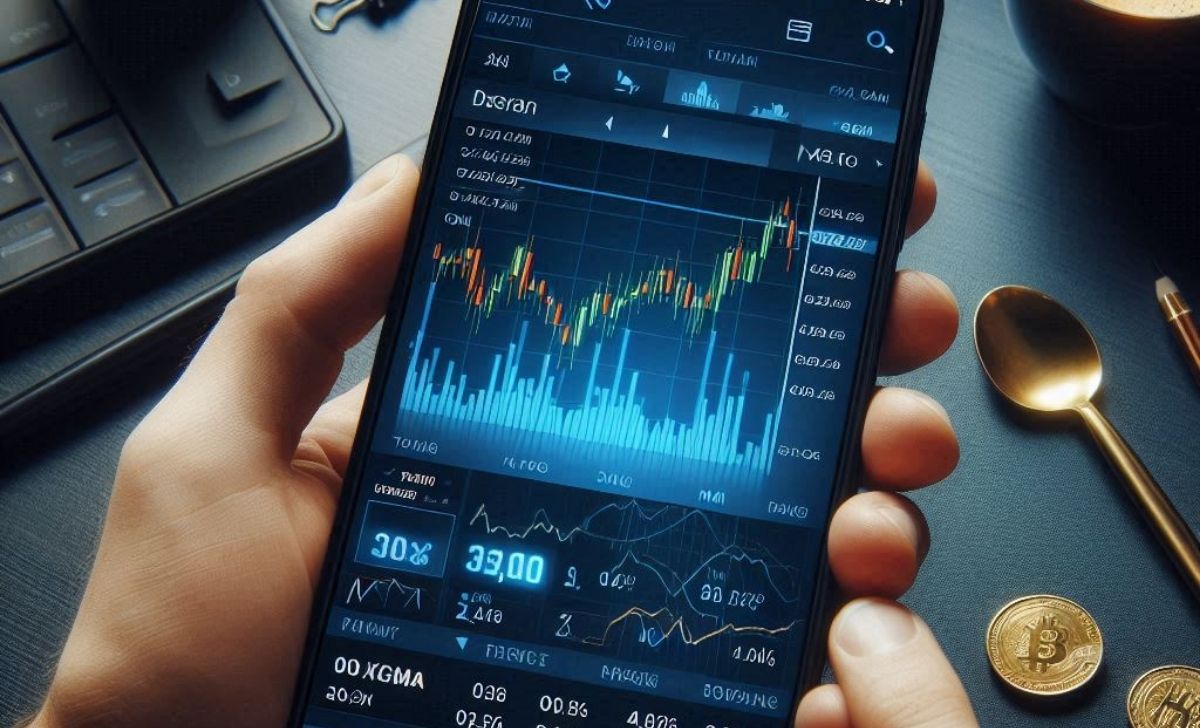The Fractal Trading Strategy uses repetitive geometric patterns known as fractals to help traders identify potential market turning points. Developed by Bill Williams, this method highlights areas where price has likely found temporary support or resistance. When applied on platforms like XM, fractals can serve as effective signals for reversals, breakout entries, or confirmation within broader strategies.
Markets may seem chaotic, but fractals reveal repeating structures that signal key price levels. Here’s how to use fractals on XM to improve your timing and spot reversals, especially useful for traders looking to learn trading through structured pattern recognition.
What Is a Fractal in Technical Analysis?

In technical analysis, fractals are recurring patterns that indicate potential turning points in price. Unlike more complex indicators, fractals offer a visual clue to market structure based on price action alone. Though simple in appearance, they are powerful when applied within a larger trend-following or breakout strategy.
What is a fractal in trading, and how is it formed?
A fractal in trading refers to a small, repetitive price pattern that typically signals a local high (resistance) or local low (support). These formations are particularly useful for identifying:
-
Trend reversals
-
Support and resistance levels
-
Strategic entries or exits
Fractals are most commonly applied to candlestick charts, and the simplest type involves a five-bar structure (explained below). A fractal high forms when a candle has two lower highs on each side, while a fractal low forms when it has two higher lows on each side.
Fractals appear after the pattern completes, meaning they are lagging indicators but still highly valuable in combination with trend tools like Moving Averages or the Alligator indicator.
What is a 5-bar fractal structure (Bill Williams model)?
The Bill Williams fractal model defines a fractal using 5 candlesticks in the following formation:
For a bullish fractal (potential reversal):
-
Bar 1: lower high
-
Bar 2: lower high
-
Bar 3: lowest low (the pivot)
-
Bar 4: higher low
-
Bar 5: higher low
For a bearish fractal (potential reversal down):
-
Bar 1: higher low
-
Bar 2: higher low
-
Bar 3: highest height (the pivot)
-
Bar 4: lower high
-
Bar 5: lower high
This structure is easy to spot and is used extensively in Bill Williams’ trading system, often alongside the Alligator indicator to confirm trend strength or breakouts. Fractals can only be confirmed after the 5th bar closes, so they are not predictive on their own.
How do fractals differ from standard reversal candlestick patterns?
While both fractals and reversal patterns aim to identify turning points in price, they differ in structure, timing, and interpretation:
| Feature | Fractals (Bill Williams) | Candlestick Reversals (e.g., Doji, Engulfing) |
| Structure | Fixed 5-bar pattern | Varies: 1 to 3 candles |
| Confirmation | Requires full 5 bars | Often confirmed within 1–2 bars |
| Indicator Type | Systematic, coded | Visual, discretionary |
| Use in Trading Systems | Automated-compatible | Often used manually |
| Common Use | Highs/lows, trend breakout | Exhaustion, reversal entry |
Fractals are also more objective, which makes them suitable for coding into Expert Advisors or using in rule-based strategies. In contrast, candlestick patterns often require more subjective confirmation or confluence with other tools.
Are Fractals Effective for Identifying Market Turning Points?

Fractals are widely used in technical analysis to spot potential reversals in price. Based on simple price structures, they aim to pinpoint local highs and lows where the market may change direction. But how effective are they in real world trading? Let’s break it down.
Do fractals accurately signal highs and lows?
Yes, fractals are designed specifically to detect swing highs and lows in price, making them a natural tool for identifying potential market turning points. By analyzing a sequence of five candles, they highlight:
-
A fractal high in a local resistance area
-
A fractal low at a local support level
While they don’t predict future moves, fractals often align with key reaction points, especially when combined with broader trend analysis. However, their accuracy improves significantly when used with confirmation tools like volume indicators, trend lines, or moving averages. Alone, they may highlight too many insignificant turns in choppy markets.
How often do fractal signals repaint or lag?
Fractals are non-repainting, which means once confirmed, they don’t change. However, the key limitation is that they are lagging indicators:
-
A fractal only forms after two candles close on either side of the pattern.
-
This means traders spot the turning point 2 bars after it occurs.
As a result, some price movement may already have occurred before the signal appears. In fast-moving markets, this can lead to missed entries or reduced reward-to-risk ratios.
Despite this delay, fractals remain popular due to their consistency and clarity, especially when combined with trend direction or support/resistance context, just remember that no indicator is foolproof, so always apply proper risk management and refer to the Disclaimer XM when trading.
Are fractals more reliable on higher timeframes?
Yes, fractals tend to be more reliable on higher timeframes such as H4, Daily, or Weekly charts. This is because:
-
Price action is less noisy at higher intervals.
-
Patterns are more meaningful due to greater participation by institutional traders.
-
False breakouts and minor swings are filtered out.
On lower timeframes like M5 or M15, fractals can produce excessive signals due to market noise and whipsaws, making them less useful without strong filters.
| Timeframe | Signal Quality | Ideal Usage |
| M1–M15 | Low | Only with confluence tools |
| H1–H4 | Moderate | Short- to mid-term signals |
| D1–W1 | High | Stronger trend reversals |
Tip: Combine higher timeframe fractals with lower timeframe entries for a multi-timeframe edge.
How to Use the Fractal Indicator on XM Trading Platforms?

Fractals are built in tools on XM MetaTrader 4 (MT4) and MetaTrader 5 (MT5) platforms, offering traders a straightforward way to detect potential market turning points. Whether you’re a beginner or experienced trader, understanding how to apply and enhance this indicator can unlock deeper insights into your technical analysis.
How to add the fractal indicator in MT4/MT5 with XM?
Adding the fractal indicator on XM’s platforms is simple and requires just a few clicks:
Steps to add Fractals on MT4/MT5:
-
Open your XM MT4 or MT5 terminal and log into your trading account.
-
In the Navigator panel, go to Indicators > Bill Williams > Fractals.
-
Drag the indicator onto your chart or double-click it.
-
Click “OK” to apply default settings.
You’ll now see upward or downward arrows on your chart marking the fractal highs and lows these represent short-term reversal points.
Note: Fractals are non-lagging on display, but they only appear after two candles confirm the pattern, so real time recognition comes with a slight delay.
What settings or customizations are available for fractals?
By default, the Fractals indicator on MT4/MT5 uses the standard 5-bar rule:
-
A fractal height appears when the height is higher than the two bars before and after.
-
A fractal low appears when the low is lower than the two bars before and after.
Customization Options (limited but useful):
-
Color and style of the arrows (e.g., red/green, thicker lines for visibility)
-
Timeframe application: While you can’t change the core logic, you can view fractals across different timeframes by adjusting the chart.
For traders who want more control (e.g., adjust to 3-bar or 7-bar fractals), there are custom fractal indicators available online which can be added via .ex4 or .mq4 scripts.
Can fractals be used with alert systems or automated tools?
Yes, fractals can be integrated with both manual alert systems and automated trading tools on XM platforms:
Alerts:
-
MT5 offers native alerting via the “Alerts” tab at the bottom terminal.
-
You can set alerts when price crosses the most recent fractal level (high/low).
-
For MT4, you may need to install a custom indicator or script that generates sound or popup alerts based on fractal formations.
Automation with Expert Advisors (EAs):
-
Fractals can be referenced in EAs using MQL4/MQL5.
-
Many trend-following or breakout strategies use fractals for:
-
Entry confirmation (e.g., buy above the latest fractal high)
-
Dynamic stop-loss placement (e.g., below previous fractal low)
-
-
Example: Combine fractals with ATR or RSI inside an EA for volatility filtered entries.
Tip: Use fractals alongside pending orders (buy stop/sell stop) to anticipate breakouts at key levels.
How to Trade Using the Fractal Strategy?

Fractals, as defined by Bill Williams, help identify potential market turning points. When combined with other technical tools, they can form the core of a reliable trading strategy. This section explains how to effectively enter, manage, and enhance trades using fractal patterns on platforms like XM’s MT4 and MT5.
How to confirm a fractal high/low before entering a trade?
A fractal high or fractal low only becomes valid after two candles close on either side of the central bar. This means there’s always a delay a confirmed fractal is visible only after five bars have fully formed.
Trade confirmation process:
-
Wait for the arrow (fractals indicator) to appear on the chart.
-
Confirm the breakout of the fractal level (price must move above the high of a fractal high, or below the low of a fractal low).
-
Ideally, combine this breakout with volume confirmation or momentum indicators like RSI or MACD for better reliability.
Example: For a buy setup, wait for the price to close above the last confirmed fractal high, ideally with bullish volume or RSI above 50.
Where to place stop-loss and take-profit based on fractal structure?
Fractals help define natural support and resistance zones, making them useful for precise trade management.
Stop-loss placement:
-
For buying trades: place SL just below the most recent fractal low.
-
For selling trades: place SL just above the most recent fractal high.
-
Include a buffer of a few pips to account for market noise or spread.
Take-profit (TP) techniques:
-
Use the distance between previous swing points (measured between fractals) as a target.
-
Alternatively, apply a Risk:Reward ratio of at least 1:2.
-
TP can also be set at the next key support/resistance or Fibonacci level beyond the breakout.
How to use fractals with trendlines or moving averages for confluence?
Confluence is critical in improving signal strength and reducing false entries. Fractals work best when confirmed by other tools:
With trendlines:
-
Draw trendlines connecting recent fractal highs or lows.
-
A fracture of the trendline + a fractal breakout adds strong confirmation.
With moving averages (MAs):
-
Use a 50-period or 200-period MA to define trend direction.
-
Buy fractal breakouts above the MA.
-
Sell fractal breakdowns below the MA.
-
Pro tip: A fractal low forming on an uptrend above 50 MA is often a high-probability bounce setup.
How to trade multi-fractal patterns for swing or trend reversal setups?
Multi-fractal setups occur when multiple fractal highs or lows form near the same price level, signaling a strong resistance or support zone.
Swing trading strategy with multi-fractals:
-
Identify a cluster of fractal highs/lows.
-
Mark the zone as a critical level —The price often reacts strongly here.
-
Wait for a clean break above or below this zone.
-
Enter on retest or momentum continuation.
For trend reversals:
-
Combine multi-fractals with divergence on RSI/MACD.
-
Confirm with a break of structure (e.g., lower high/lower low pattern change).
These setups are ideal for H4 or Daily timeframes, where noise is reduced and fractal formations are more reliable.
Fractals offer a simple yet powerful way to pinpoint potential reversals in trending or ranging markets. By identifying clusters of price exhaustion, traders can refine entries and exits with greater confidence. On XM charts, combining fractals with other indicators like the Alligator or moving averages can significantly strengthen your trading edge.

Lina Vexley is a forex education specialist with a passion for guiding new traders. She offers step-by-step lessons on MetaTrader and risk control, making XM accessible and practical for traders of all experience levels. Email: [email protected]

 Tiếng Việt
Tiếng Việt
